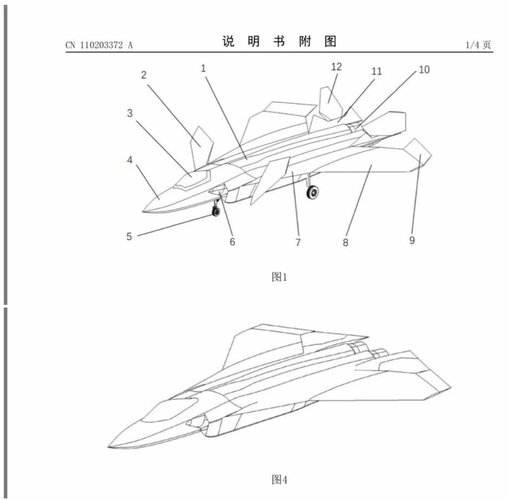And all of that happened inside the last year? Since the RFP was released last summer. What are the odds of that? More likely that they simply don't have the funds and a rescoping at the 11th hour will lead to lawsuits and a huge set of other problems which make setting this aside and starting on a new program (like NGB?) the only viable next step unless they have funding and walk all this talk back.
A while ago a very large company in the USA (I can't say which one) commissioned me to design a sixth generation fighter, to use it in a report that would be shown to investors from what I understood.
The leader of this project was an aerospace engineer who worked at both Boeing and Lockheed, because, although he did not know what the proposals of both companies were like, he did have some knowledge of the general aspects of both.
One of the things they emphasized the most is that the model had to be large, about 22 meters, have side air intakes and above all that it had to
look very similar to a modern YF-23 (which they emphasized the most).
And what caught my attention the most was that they wanted him to
have foldable tails. They told me that this was so that it would be as stealthy as possible on long flights and that when the plane reached its destination or the pilot needed it, the tails that in "stealth mode" would make it look like a plane without a tail (like those seen in most representations), folded upwards, reaching an angle similar to that of a YF-23, so that the plane would enter "combat mode."
I asked if this was an assumption or if it was real information, to which I had no answer... and I just continued with the work (which I cannot show due to confidentiality issues).
But if, as I believe, the information they gave me is based on some type of knowledge, what can be assumed is that as we say in Argentina, if it barks, has four legs and wags its tail, it is a dog; here perhaps it happens that the plane must meet too many requirements which makes it extremely expensive (perhaps much more than 300 million per plane in reality).
These requirements would be to fly very far while being very stealthy and carry a lot of weapons, so it would have to be quite large; and also have good maneuverability and the ability to self-defense in the "traditional way" (dog combat) in case of encountering an enemy.
That's why when I read that perhaps the possibility of adapting the B-21 as a sixth-generation fighter was being evaluated, I wasn't very surprised. Because here the requirements would clearly be being simplified: the ability to maneuver is completely nullified.
I would love to know if the information they gave me to design is real and also to know if the folding tails are one of the characteristics of any of the participants. If so, and this thing about folding tails is from Lockheed's proposal, and they were the ones who presented something "more traditional", I would much more like to know what Boeing presented.
I don't know if all this is true or not. I just wanted to share it...
Best regards!


